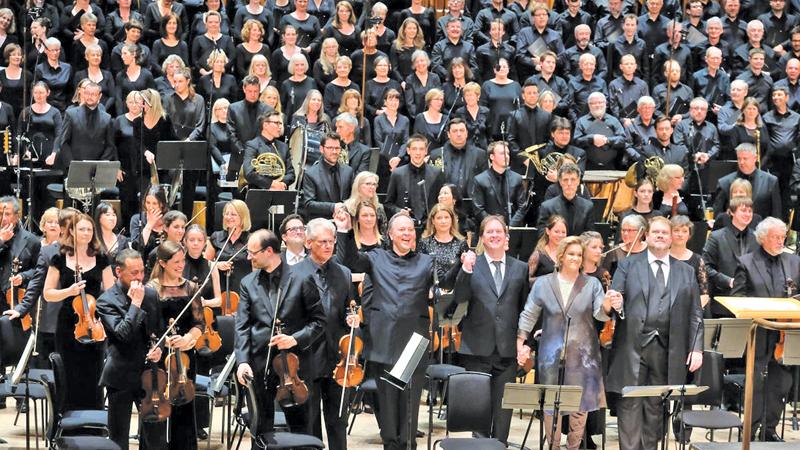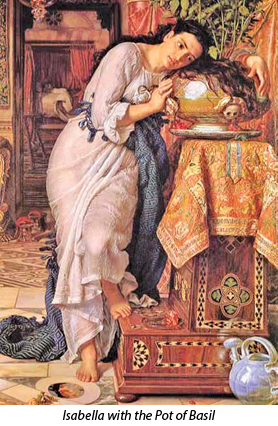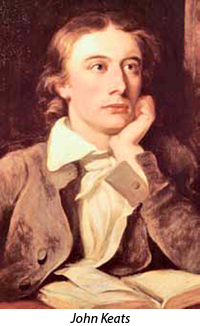
The world literati remembered his poetry and paid tribute on his bicentenary last month.
 Flawless to begin with, in those epics he wrote; Endymion, Lamia and Isabella that stood out from the rest, he was unmatched among the male Romantics who opted to represent an erotic feel with a woman as a visionary experience, not that many men do not. They go through this experience when a woman they desire is unattainable. But where Keats was concerned, it was different owing to his feminine character that dominated his poetry. Sad to say, his brilliance was one-sided, more feminine connected, it revealed his weak personality that prevented or clashed with the beauty of words that made his poetry scale heights.
Flawless to begin with, in those epics he wrote; Endymion, Lamia and Isabella that stood out from the rest, he was unmatched among the male Romantics who opted to represent an erotic feel with a woman as a visionary experience, not that many men do not. They go through this experience when a woman they desire is unattainable. But where Keats was concerned, it was different owing to his feminine character that dominated his poetry. Sad to say, his brilliance was one-sided, more feminine connected, it revealed his weak personality that prevented or clashed with the beauty of words that made his poetry scale heights.
A striking feat towards the discourse on Keats in the nineteenth and twentieth centuries is the frequency with which his gender was an issue not on a matter of biology but his ideology in this context. A profound division of judgment that he agitated, was of interest not only to his colleagues but the critics of his time who lost no time surfacing his effeminate character in the language he wrote with.
Social and psychology influences
Many were to question or provoke this type of obsessive vocabulary in his letters about the character difference and poetic existence. However, Keats did not fit conventional theory that made him a convenient focus for ideology. He had his own literary style and sensibility which was signature that made him highly legible to social and psychology influences. Byron was the first poet to come out and criticise Keats’s feminist bearings and together with John Lockhart forced a rhetoric that puerilised to exclude Keats from adult male company from a serious consideration as a poet.
They tabbed as one from the Cockney School. Though it hurt Keat’s ego, he was aware he was born in the city of London which ‘cockney’ implies also being a mother’s darling, a child brought up tenderly. All poets of his generation found Keats spoilt by Cockneyfying but Byron was different and thought Keats spoilt by sexual immaturity.
But Keats had his own charm that drew women to him with elegance. This made it worse as he plunged into their admiration and affection that unwittingly ended up in his poems. He was never the spirited man women thought him to be.
Two combined verses
 Two combined verses from his 1818 poem, Isabella (or the Pot of Basil). A robust tragedy spiced in romance and death, laid upon a helpless, beautiful girl who is at the mercy of her two brothers. The story has high value, seeped in romance and cold-blooded murder; a story as remarkable as its heroine but Keats fail to rise to its depth. The verses are filled with unwarranted melancholy and stero-type, run-on-the-mill poetry. It is sad that he failed to draw out the essence, the aura that surrounds the subject. Compared to Keats’ Endymion, Isabella takes a back seat with so much potential that has gone untapped. Given to Shakespeare, Isabella could have been dialogued to such scaling heights with a spectacular, rise, that Isabella would have been among his top tragedies.
Two combined verses from his 1818 poem, Isabella (or the Pot of Basil). A robust tragedy spiced in romance and death, laid upon a helpless, beautiful girl who is at the mercy of her two brothers. The story has high value, seeped in romance and cold-blooded murder; a story as remarkable as its heroine but Keats fail to rise to its depth. The verses are filled with unwarranted melancholy and stero-type, run-on-the-mill poetry. It is sad that he failed to draw out the essence, the aura that surrounds the subject. Compared to Keats’ Endymion, Isabella takes a back seat with so much potential that has gone untapped. Given to Shakespeare, Isabella could have been dialogued to such scaling heights with a spectacular, rise, that Isabella would have been among his top tragedies.
It was a vision...
In the drowsy gloom
The dull of midnight, at her couch’s foot.
Lorenzo stood, and wept;
the forest tomb
Had marr’d his glossy hair
which one could shoot
Lustre into the sun and
put cold doom
Upon his lips,
and taken the soft lute
From his lorn voice and passed his loamed ears
Had made a miry channel his tears.....
But Keats has failed to seize the significance of his own story and build around it. Instead, his mile long stanzas are painful to read and if the reader was not updated with the story, he would have felt reading nonsense.
In fairness to Keats, we must realise that he never wrote a play rather a narrated story that would have been better written to a tale rather than a poem. May be he was intent conveying the poem into a poetic play, but it never occurred. When the poem was published, it met with a lashing from some while others saw a glint of hope in the flagging poetry scene. This tale was praised by Charles Lamb but in 1853, Mathew Arnold pitched it for criticism. But later, the reader was given the option to decide to himself on a comparison with his Isabella as with A Sicllian Story Written by his friend. It was conceived with love and misery of Isabella.
Yet the question remains: Why did it have to trail behind Endymion? or for that matter, why did Keats have to trail behind Wordsworth? Keats confined himself to his own art of writing and drew heavily upon archaic and pseudo English that produced a sense of public disgust not so much for Isabella but in general. By this time, poetry readers were tired of antiquity and were looking for robust romanticism and his style was static where certain spellings could have been removed. I am not a great poet to sit in judgment on Keats but taking for granted that poets, such as Shelley, Coleridge, Milton, Wordsworth; Robert Browning and lesser known English had left him behind in spite of his spectacular Endymion and the rest. However, Endymion was the target for the criticism against Keats but later, but later, one critic asserted it on the failure of those critics to understand the beauty and meaning behind this literary saga.
Keats after his death
Keats opted to dream a story to evolve around Isabella but came up with a long poem instead and originally titled The Pot Of Basil derived in turn from the narrative in Baccaccio’s The Decameron. The love story turns into a tragedy; a gruesome murder where Isabella becomes the innocent victim. Lorenzo visits her in a dream and tells her where his body lies so that she could exhume it and hold unto her heart in a bottle of basil where later, the brothers discover it only to destroy what she obsessively possessed, whereupon she pines and dies.
Keats died in 1821 and Frank Bridge in 1879, fifty-eight years later. Bridge was to resurrect Isabella as well as Keats to phenomenal heights of fame and popularity. Keats was buried after casts of his head, hand and foot were taken before his body was interred in the Protestant Cemetery according to his wishes where violets grew and was his own elegy. Bridge was the Messiah for the awakening of Isabella in symphony.
I attended this massive orchestration in September, 2011 at the Royal Albert Hall by the BBC symphony Orchestra with the rare notation by Frank Bridge whose music had been a regular feature at the RAH. Bridge had been only 27 years old when he scored Isabella after its tone-poem inspired by the most horrible, gruesome story of the innocent eponymous heroine whose brothers kill her lover, Lorenzo and who visits her in a dream and inform her whereabouts her buried body. Isabella finds the grave, cuts off his body and conceals it in a pot of basil. Later the brothers discover it and steal whereupon, she pines and dies. Great was her love for Lorenzo.
But no poet attracted so many literary biographers as Keats among Romantic poets. He blazed a trail full of them and new readers will find Keats’s aura especially in The Poetry of Keats by Brian Stone in the penguin series published in 1992. All writers have criss-crossed his poem and keep rediscovering his amazing virtuosity.
Consistent writer
Keats was a consistent writer and fair enough to say criticism has been more traditional with literary scope and method until recently which made critics tend to concentrate on matters of style and artistic purpose. There is always a story or a legend in his long poems. A fine example is Isabella, a stunning story that lifted the imagination of composers. One of them boarded the story in musical lyrics at the spacious ornate auditorium of the Royal Albert Hall with the BBC Orchestra conducted by the living composer, Sir Harrison Birtwistle. The original score was by Franck Bridge (179-1941) in Concerto for Violin and Orchestra 25.
A wide full orchestra three times over with so many harps, may have been around hundred musicians that I had never seen even with the London Philharmonic Orchestra. It was so amazing and such a wonderful tribute to Keyts’s Isabella. Sir Harrison being one of the magnificent conductors of the day, rose in full stature bringing many violins to the fore. It was really a string affair presented by the BBC Symphony Orchestra.
Bridge completed the score of Isabella of 1907 and was his most effective orchestral work. It established him as recognised individual music voice. It was conducted by Sir Henry Wood and was smashing success. In 1935, The BBC Orchestra played the score with Bridge conducting for the first time.
The grisly story related in John Keats’ Isabella (or Pot of Basil) was derived from a narrative, The Decameron. No other work by Bridge follows a literary program closely as this poem. The composer had segmented the score into four divisions to retain the elements of sadness, horror and love tragedy. It is a simple diatonic melody which reflects Isabella’s bold character as suggested by Keats. Apparently, Bridge had studied Liszt’s symphonic poems as well as Tchaikovsky’s Romeo and Juliet and perhaps some of Richard Strauss’s essays in genre. But the radiant orchestral outpourings that Bridge combined Lorenzo’s and Isabella’ theme pointed forward to his maturity in mixing tone poems in symphonic scores, to outshine many who tried to follow him.
